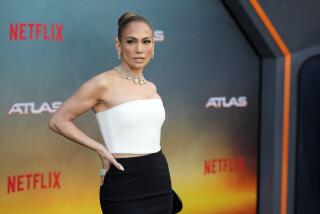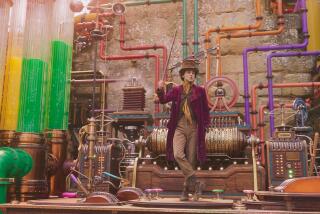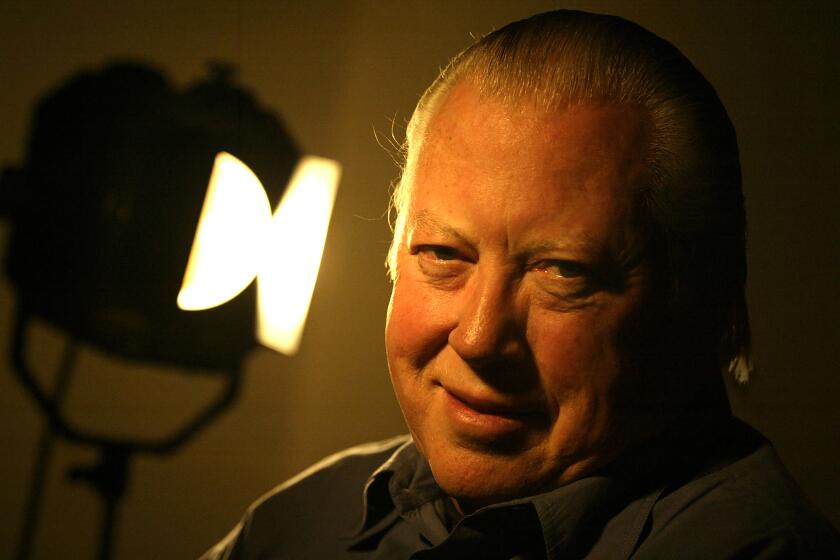‘Twilight’ Prosecutor’s Demand for U.S. Expert’s View Refused by Judge
The prosecutor in the “Twilight Zone” manslaughter trial Wednesday accused the federal government of obstructing justice by prohibiting a federal investigator from rendering an opinion in court on the probable cause of the 1982 film set helicopter accident that killed actor Vic Morrow and two children.
“The bottom line here is this is a complete mockery of our judicial system and a travesty of justice and something is wrong, very wrong, in Washington,” Deputy Dist. Atty. Lea Purwin D’Agostino declared outside court after the sketchy testimony of Abdon Llorente, the National Transportation Safety Board’s chief investigator on the “Twilight Zone” case.
Llorente, accompanied by two government attorneys, cited federal regulations and direct orders from his superiors in repeatedly refusing to answer questions posed by D’Agostino concerning the cause of the crash.
In a report released in 1984, the safety board had declared that the aircraft’s tail rotor system was crippled by two probable causes--debris and heat from a special-effects explosion.
“The proximity of the helicopter to the special-effects explosions,” the federal report continued, “was due to the failure to establish direct communications and coordination between the pilot . . . and the film director.”
Director John Landis, pilot Dorcey Wingo, and three film-making associates are on trial in the deaths of the actors, who were killed when the plummeting aircraft crashed on them.
Despite D’Agostino’s protestations, Los Angeles Superior Court Judge Roger W. Boren refused to require Llorente to answer most of the disputed inquiries, saying that he tended to agree with the federal policy. The judge, who was previewing Llorente’s testimony without the jury present, compared the situation to that of a police detective who could not testify about conclusions he placed in his police reports concerning a crime.
Llorente, Boren also emphasized, “is not the board himself.”
Defense attorneys later praised Boren’s ruling, noting that D’Agostino can instead call as witnesses the scientific experts whose studies led to the board’s conclusions. Several such experts testified at a preliminary hearing, where they faced rigorous cross-examination by the defense, which also called its own experts who offered a different scenario.
“She wants this man who is not an expert to say what the cause was,” defense attorney Leonard Levine, who represents unit production manager Dan Allingham, said outside court. “ The D.A. is afraid to put on the experts who gave them the information that they used. . . . She must be afraid under cross-examination that their theory is going to be blown apart by the defense.”
The defense contends that the accident was caused by heat delamination, a process in which the metal skin of the rear rotor blade peeled away due to the heat of the special-effects explosions. The accident was thus unforeseeable, they say, since no previously recorded helicopter accidents had occurred for that reason.
D’Agostino, who had hoped Boren would order Llorente to answer her questions and place him in contempt of court if he did not, grew visibly angry when the judge concluded that there was no point in her attempting to “end run” the federal attorneys’ objections.
“There is an obstruction of justice here,” D’Agostino declared. “ . . . I don’t know why but I’d really like to get to the bottom of this.”
Later, outside court, NTSB counsel Steven A. Rolef and Assistant U.S. Atty. James R. Sullivan declined comment on D’Agostino’s allegation, both saying they “wouldn’t dignify it with a comment.”
D’Agostino herself acknowledged outside court that her office should have initiated a challenge of the federal regulations three years ago. It was already too late for such legal action to be completed in time for the trial, she asserted, when she was assigned the case a year before the trial began last summer.
Llorente testified briefly before the jury, but provided only basic evidence concerning what he personally witnessed at the accident site.
More to Read
Only good movies
Get the Indie Focus newsletter, Mark Olsen's weekly guide to the world of cinema.
You may occasionally receive promotional content from the Los Angeles Times.






